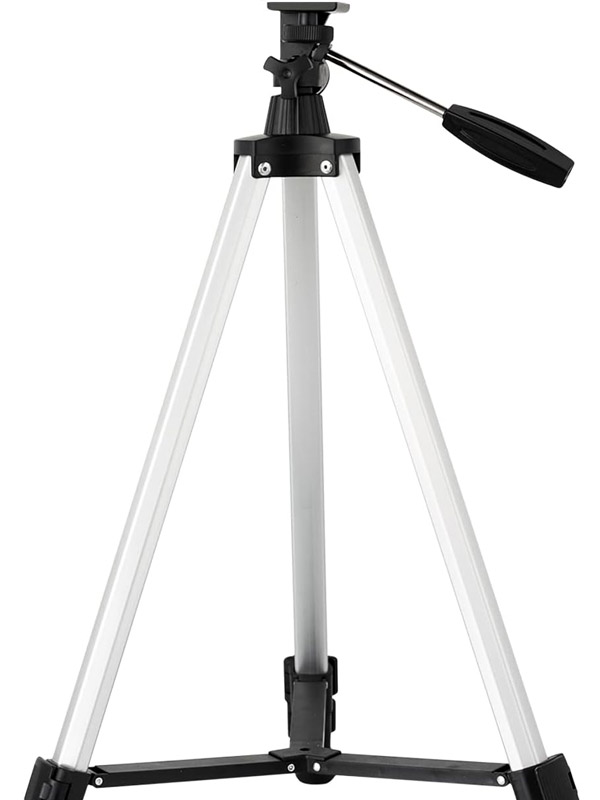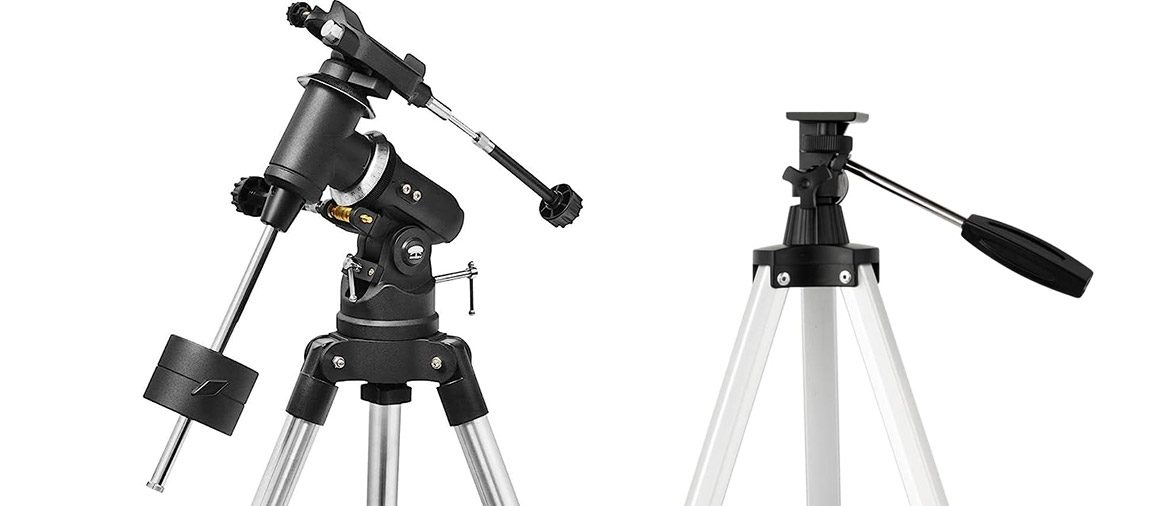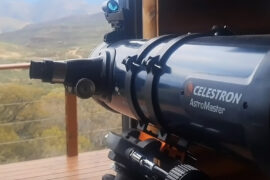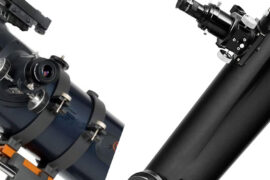As a newcomer to the stargazing hobby, you will find that there are primarily two types of mounts, at least when it comes to backyard telescopes. These are Altazimuth (or more correctly, Alt-Azimuth) and Equatorial mounts.
The mount of a telescope is the piece that connects the tripod to the telescope tube. It is basically the “joint” that allows for the tube to be rotated and pointed at a specific area of the sky. In the case of home telescopes, it also has the controls that you will use to achieve that movement. And finally, in many cases, it also supports the weight of the tube.
As you can see, the mount is a fairly important part of a telescope that is often forgotten.
Both types of mounts have their own advantages and disadvantages which might not be clear for a beginner. This is why in this telescope I’ll compare Altazimuth vs Equatorial mounts, explain the pros and cons of each of them, and who I’d recommend each one for.
Altazimuth mounts

Pros:
- Easy to use
- No setup required
- Inexpensive
- Doesn’t require any prior knowledge
Cons
- No way to move to an exact coordinate
- Can’t track moving objects with precision
Alt-azimuth mounts are the most basic, but most versatile type of telescope mount. Their name explains how they function but it is not too obvious if you are not familiarized with the terms. The “Alt” part stands for “altitude”, and “azimuth” is the angular distance between your position and an object in the sky.
This means that Alt-azimuth mounts can move in two axes or two directions, altitude and azimuth. Or “left-right” and “up-down” to make it easier to understand.
AZ mounts (short for Altazimuth) have two controls. Usually, these are two levers or sticks but sometimes you’ll see a dial. These control the movement on both axes and are very intuitive to use.
Since they are only able to move in two directions based on our perception of “up and down” from Earth, AZ mounts are not very precise when it comes to tracking objects in the sky as those follow a circular movement. This limits them when it comes to astrophotography and long viewing sessions.
For home telescopes, Alt-Azimuth mounts are generally paired with refracting and Dobsonian telescopes. They are a great fit for reactors because it is a perfect pairing to make a “point and shoot” telescope that is very easy to use for beginners. Large, heavy telescopes like Dobsonians use a version of an AZ mount that is constructed in a large base instead of a tripod and can move clunky devices. Even the bases used by large observatories use, in essence, an AZ mount, although those are fully computerized and motorized which removes the precision issues that I pointed out above.
Equatorial mounts

Pros:
- Very precise
- Can track moving objects with precision
- Can be pointed toward specific coordinates
Cons:
- Steep learning curve
- Can be frustrating and unintuitive for beginners
- More expensive
Equatorial (EQ) mounts are more complex than AZ mounts.
The first that you will notice is that a lot of them come with a counterweight. opposite to the telescope’s tube. This is because EQ mounts can rotate with the movement of the stars. This can put the tube in positions where it is not directly supported by the tripod so this counterweight is required to keep it stable.
Equatorial mounts can be aligned with the Earth’s pole. This allows them to rotate following with precision the movement of the stars in the sky, making them perfect for tracking objects through long sessions. This also makes the ideal for astrophotography as it allows you to take photos with long exposures.
The controls on an Equatorial mount are more complex. Instead of a simple lever, you will generally find a couple of dials or some other kind of mechanism with some marking. These are to set the right ascension (longitude) and declination (latitude) of the telescope. These are the two necessary coordinates to find any object in the sky. If you know the coordinates of an object and the telescope is correctly aligned, you can input them and find it with precision. These controls, however, can be tricky to use and have a steep learning curve in order to use them proficiently.
Due to the requirement to align them, EQ mounts have a bit of a setup process every time you want to use the telescope. This doesn’t take more than 3-5 minutes once you learn the process.
EQ mounts are generally paired with Newtonian telescopes and high-end fast refractors that are made for astrophotography.
Alt-Azimuth and Equatorial mount differences
- Alt-Azimuth mounts can move only up-down and left-right, Equatorial mounts have a wider movement range.
- Equatorial mounts align and track the elliptical movement of objects in the sky. Alt-Azimuth mounts can’t.
- Equatorial mounts need to be aligned before using them. Alt-Azimuth mounts can be immediately used.
- Alt-Azimuth mounts are generally cheaper than equatorial mounts.
- Equatorial mounts can be pointed at exact coordinates. Alt’Azimuth mounts can’t.
- Alt-Azimuth mounts are easy and intuitive to use.
Altazimuth vs Equatorial mounts
So, which one is better? Alt-Azimuth or Equatorial?
The truth is both of them are good. There isn’t one that is better than the other. It is a matter of preference and of the mount fitting into your specific use case.
AZ mounts are easy to use, inexpensive, and intuitive which makes them a great fit for kids, teenagers, and people who just want to point their telescope at the sky and star observing right away. These are my recommendations for most beginners.
However, many adults who get a telescope with an AZ mount outgrow them quickly. As they learn more and more about what they can do with their telescope, it is common to outgrow an AZ mount quickly as they lack precision and tracking. If you are someone who thinks that you’ll want to dive deeper into the hobby and you don’t mind a bit of a learning curve, then an EQ mount will be a better fit for you.
The type of telescope might also affect your decision. EQ mounts are generally paired with Newtonian telescopes which offer more power but require some occasional maintenance. Again, this makes them a better fit for an adult.
On the other hand, Altazimuth mounts come with refracting telescopes which are lighter and don’t require maintenance, making them a better fit for kids, teenagers, as a secondary portable telescope, or for someone who just wants to be a very casual observer of the sky.
Summary
- Both Alt-Azimuth and Equatorial mounts are good. Which one is best depends on your use case.
- Alt-Azimuth mounts are recommended for kids, secondary telescopes, and casual observers that want a telescope that is basically “point and shoot”
- Equatorial mounts are recommended for adults who are looking for precise movement, tracking, or a telescope well-fitted for astrophotography.







